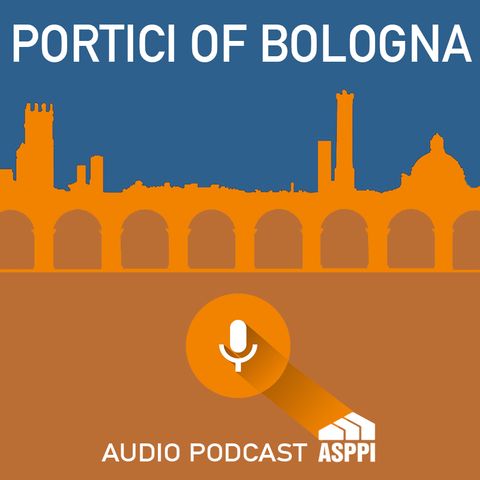Portici of Bologna. Via Santa Caterina (English)

Descarga y escucha en cualquier lugar
Descarga tus episodios favoritos y disfrútalos, ¡dondequiera que estés! Regístrate o inicia sesión ahora para acceder a la escucha sin conexión.
Descripción
The portico of Via Santa Caterina is approximately 140 m long and goes from via Ca’ Selvatica to Via Saragozza. The first document on the origin of the name dates...
mostra másHistorian Giuseppe Guidicini, writing in the 19th century, mentions how the street was lived in by «hungry wolves, prostitutes, gravediggers, shop owners and artisans» a description which testifies that this street was not one where wealthy people would choose to live. In the second half of the 1500s «prostitutes were permitted to live from half of the street up » and at the end of the 1700s it became known as "Cop alley" as here were the homes of the guards. The ancient toponym was "Pizzamorti" o "Pizzalimorti", (term connected to the dead), probably because gravediggers lived here.
There is a holy shrine at the end of the street to thank the Virgin Mary for having stopped the cholera from taking its inhabitants as above is written: "Today, 22 July 1855 / in this street the disease stopped / cholera / by the grace of / Mary".
Until the 1970s these houses with wooden porticoes were considered "minor" architecture and of little, if any, historical value. The porticoes are simply made with square pillars with no capitals supporting mostly beams of wood, which form low wooden horizontal ceilings. The conservation project of original and historical architectural typologies has made these structures a particularly important example of historical urban development which, in the case of Via Santa Caterina, is present only on one side of the street as on the other is the high wall of the convent complex, matrix of the whole study.
By Antonella Merletto Architectural historian and Official Tour Guide.
Antonella has a degree in Architecture, a post-degree specialization in Ancient Greek and Roman Architecture and a PhD in Ancient Architecture. Antonella is British-Italian and is bilingual. She teaches History of Art, History of Architecture and Archaeology in various American Universities in Rome and is an Official Tour Guide.
Información
| Autor | ASPPI |
| Organización | ASPPI |
| Página web | - |
| Etiquetas |
Copyright 2024 - Spreaker Inc. an iHeartMedia Company

Comentarios